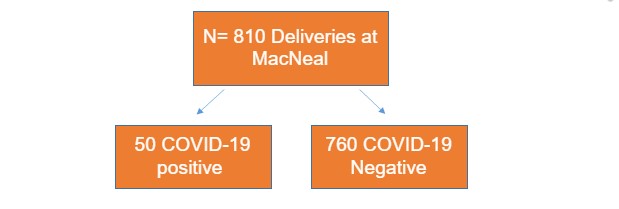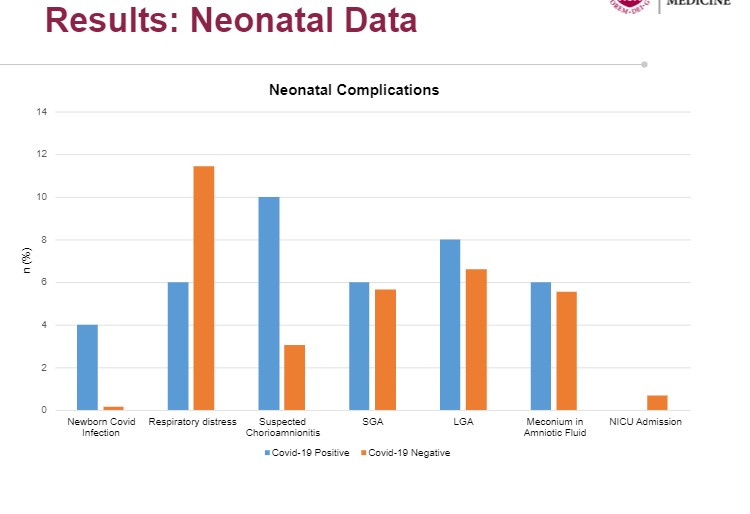Neonatal Infectious Diseases/Immunology
Neonatal Infectious Diseases/Immunology 5
447 - Covid-19 in Parturient Women and Neonatal Outcomes
Publication Number: 447.431

Yessenia Castro-Caballero, MD FAAP (she/her/hers)
Pediatric Hospitalist
Ann and Robert H. Lurie Children's Hospital of Chicago
La Grange Park, Illinois, United States
Presenting Author(s)
Background:
The novel Coronavirus known as COVID-19 was first identified in December 2019. The virus quickly spread and by March 2020 the World Health Organization (WHO) had declared a pandemic. At the time WHO declared a pandemic, New York City (NYC) reported the first case of COVID-19 in a pregnant woman. The infection in pregnancy led to questions about the outcome for the expectant mother and neonate. This analytic sample consisted of 810 unique parturient women delivering at MacNeal Hospital between March 2020 and April 2021 and their neonates. 50 women (6.17%) were positive for Covid-19 at the time of their delivery, and 760 women (93.83%) were negative. Maternal Covid-19 infection demonstrated a significant effect on pre-eclampsia (p = 0.04) and on suspected chorioamnionitis (p = 0.02). Specifically, the odds of both pre-eclampsia and suspected chorioamnionitis are significantly higher when the mother is Covid-positive than when the mother is Covid-negative The statistically significant data that infants born to mothers with Covid 19 faired worse than those without Covid 19 during labor in the categories of preeclampsia and suspected chorioamnionitis infers a need to protect pregnant women from contracting Covid 19 during pregnancy and particularly closer to labor. . We hope that our paper can add value to already published data on neonatal outcomes in Covid 19 pregnant women and to support best practices for infection control and development of new care guidelines.
Objective: We aimed to identify the incidence of COVID-19 in parturient women seen at MacNeal Hospital from April 2020-March 2021. We sought to identify risk factors for COVID-19 positivity and for serious illness in pregnancy and adverse neonatal outcomes. We also determined if the rate of COVID-19 positivity in neonates is significant to corroborate the theory of vertical transmission.
Design/Methods: Retrospective chart review using EPIC Electronic Medical Records. Descriptive summary statistics are reported to characterize the sample both overall and stratified by maternal Covid-19 infection status. Frequencies and percentages are reported for categorical variables. Means and standard deviations are reported for continuous variables. Univariable binary logistic regression models estimated the unadjusted effects of maternal Covid-19 infection on categorical pregnancy and birth outcomes. Odds ratio estimates and corresponding Wald 95% confidence intervals and Chi-square p-values are reported
Results:
Conclusion(s): 

.jpg)
